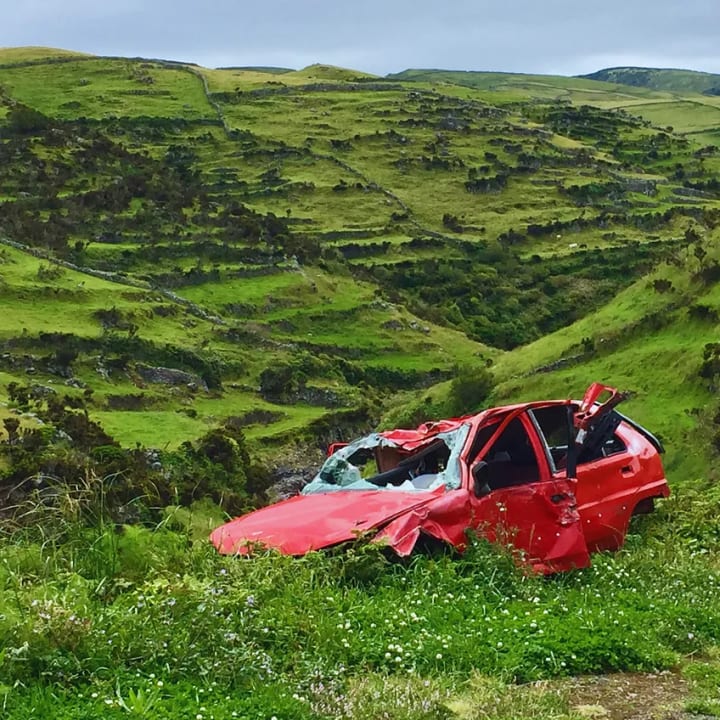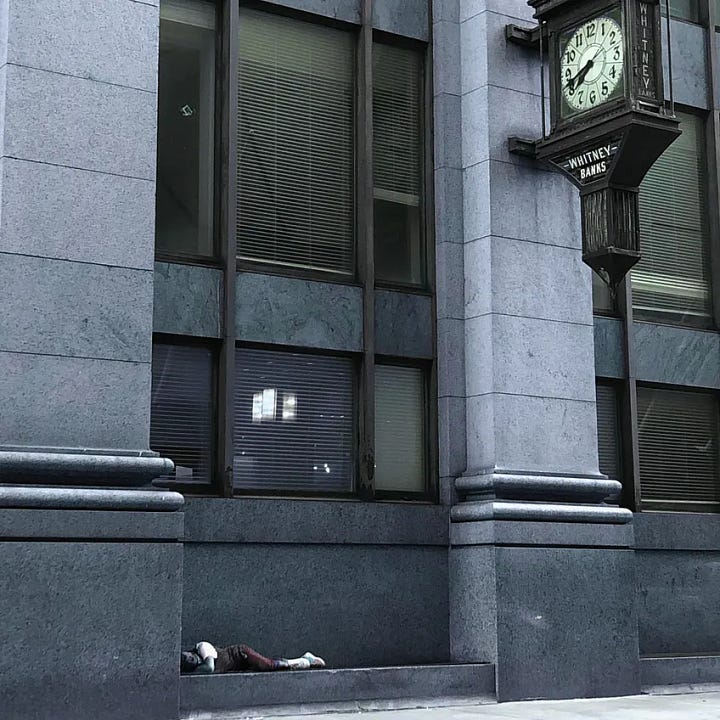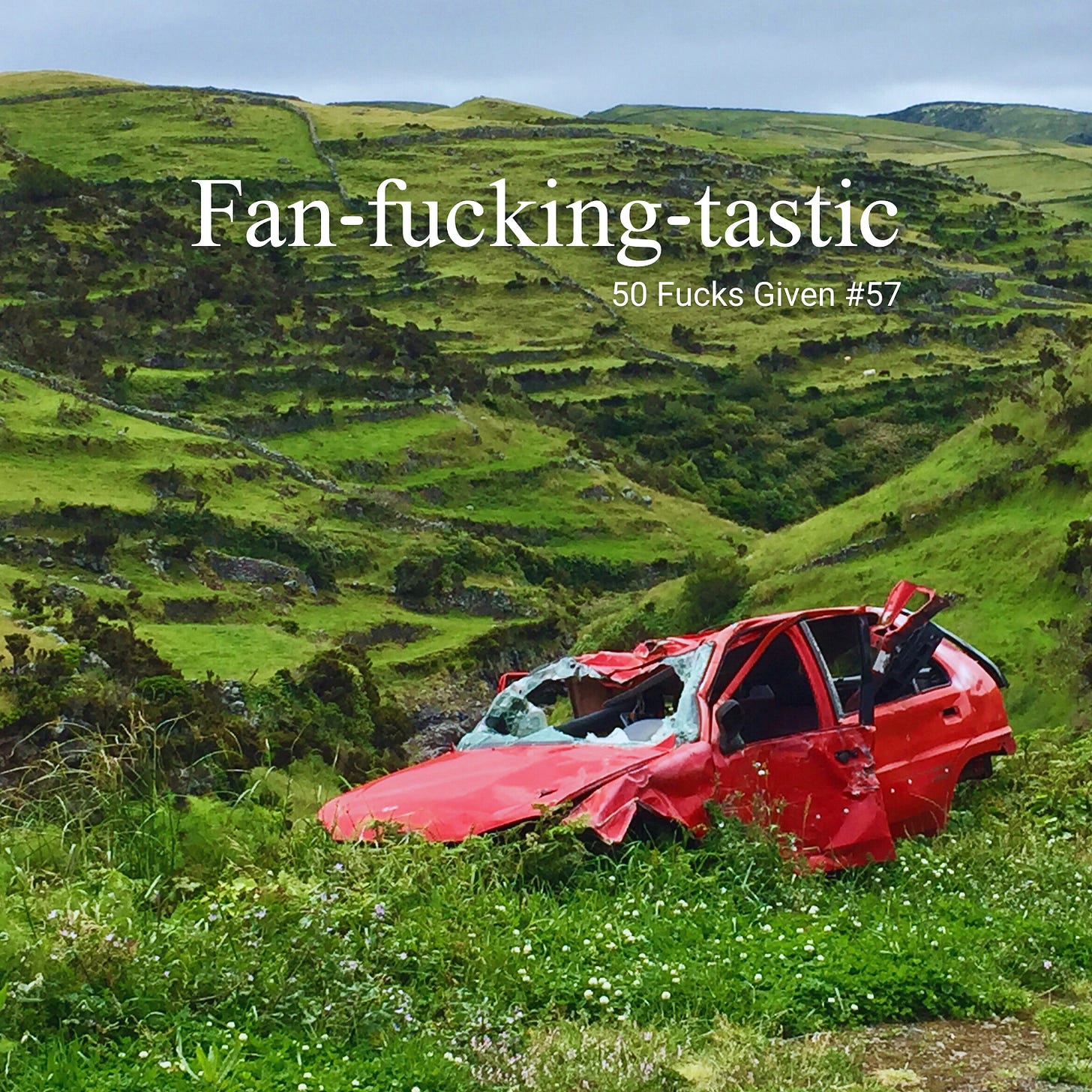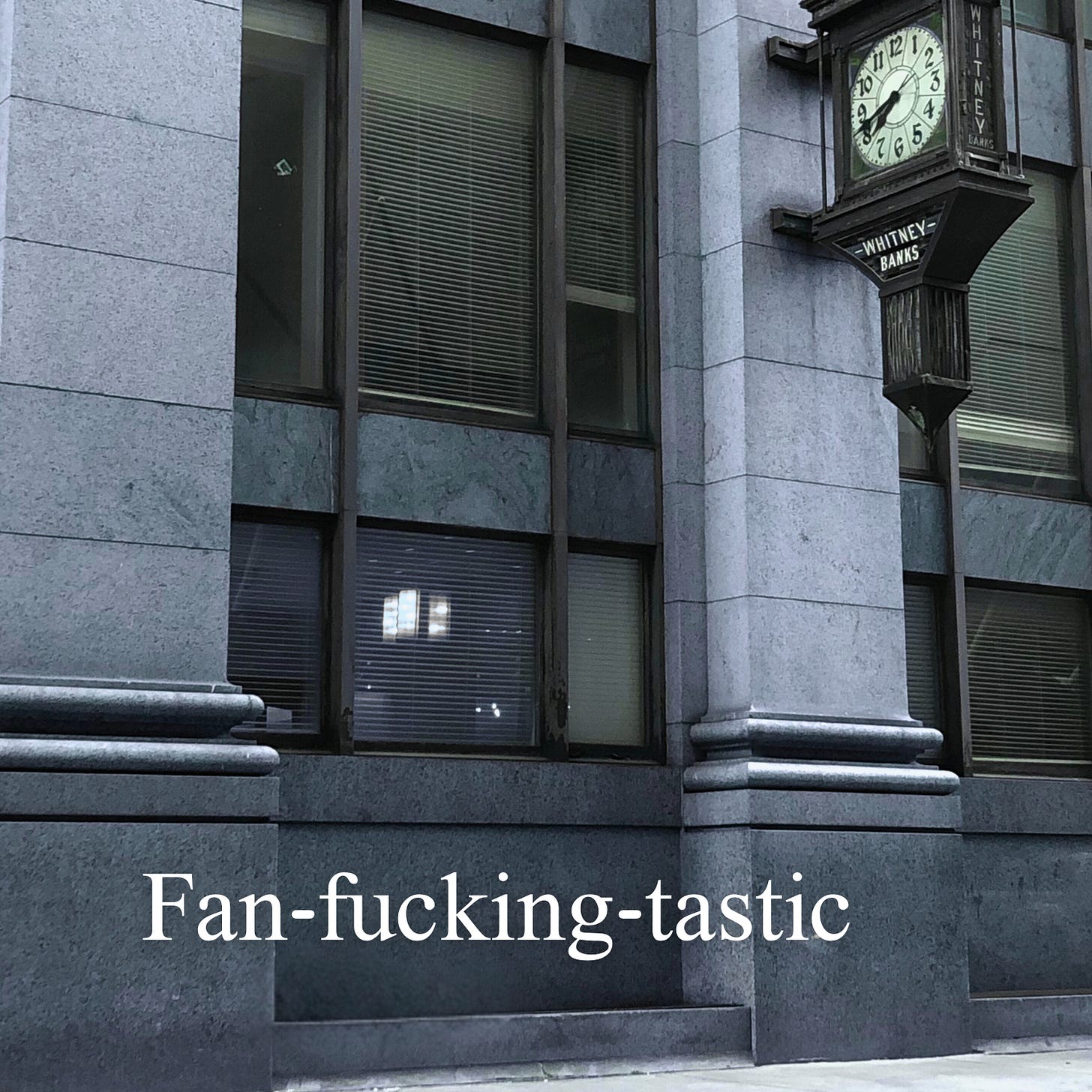Extra Fucks to Give
Friday was Axwell’s 14th birthday and because I had time to plan for him not being here for it, the day wasn’t as terrible as anticipated. My perspective is in part shaped by the fact that there was time to plan for his loss. I’m still heartbroken. I miss my little guy, but I’m also grateful for a beautiful goodbye, and that is a rare thing.
So many of life’s losses are sudden, making it more difficult to find our footing. But if loss is guaranteed, there’s an opportunity to anchor and keep a wide perspective view. None of this makes grief easier, it can only help guide you through the more gut-wrenching parts if you allow yourself to be comfortable not knowing how you’ll feel when the big moment arrives.
Grief tends to narrow our perceptions, the world we construct with our senses, because the function of pain in the body is to focus our brain on what’s wrong. Grief is pain like any other to the organ in charge; a manifestation of distress no different than a broken limb.
I say I’m heartbroken because that’s how we express deep grief, but we feel grief, as we feel pain, in our brain. Grief is the pain we experience when our brain must make sense of love lost.
There’s plenty to be said about the physical impact of grief which, like trauma, has enormous impacts on the brain and body. Not only as events, but as a cascading effect of brain and body dysregulation.
When we are in grief and trauma states, and our perception narrows on that pain, it can feel impossible to maintain perspective about who we are. There is such fracturing, splitting, and compartmentalizing. This is in ideal circumstances, where basic needs are met, etc.
When basic needs aren’t met, perspective narrows down to meet a very painful perception about the future, or it loses all tether to reality and floats into the clouds.
Who we are, where we live, how we live, and what we experience in life are constantly shaping our current perceptions, and our perspective of what lies ahead. It’s just as easy to end up in mental trap of hopeless pessimism as it is to end up in toxic positivity—the right conditions, applied long enough, will produce either outcome. When both happen simultaneously, you get cognitive dissonance like a motherfucker.
So, how do we balance? Perspective—to look closely and examine. Perspective is how we tie our individual perceptions to larger events and experiences; it’s how we choose to see the world. Our perceptions and perspectives change over time, as they should, that’s how we grow into wiser versions of ourselves.
We have perceptions that shape our greater perspectives, and we should look at them closely. In theory this sounds simple enough, right?
What about when the rotted orange in a business suit is coming back with a vengeance and nothing to lose; when there’s ongoing genocides and eroding humanitarian law; when billions are impoverished by climate disasters; when fascism is up and living standards are down…
How do we shape our perspective about the world, and our vision of its future, during these times of global fear and perceived future losses? How do we maintain perspective during ongoing, overlapping losses?
Practice. We have to practice looking closely at the information given to us and how it shapes our perceptions and changes our perspective.
Here’s an example.
How do you see this image?
Take only a moment to look at the photo and consider your initial reaction to the the following questions:
Is the wrecked car an eyesore, ruining the photo?
Does the wrecked car add something to the photo by contrast?
Do the surroundings and wrecked car represent a sense of oneness?
Should the wrecked car be removed?
Many would argue: Yes, the car should be removed, it’s in terrible shape. There are safety issues, and then there are aesthetic reasons—the look of things. Wouldn’t those lovely hills look better without that ugly wrecked car?
The next day a tow-truck hauls it away. Problem solved.
Let’s ask those same questions about another image with contrasts.
How do you see this image?

Is the homeless resident an eyesore, ruining the photo?
Does the homeless resident add something to the photo by contrast?
Do the surroundings and homeless resident represent a sense of oneness?
Should the homeless resident be removed?
Many would argue: Yes, the homeless resident should be removed, they’re in a terrible condition. There are issues of safety, and there are aesthetic reasons. Wouldn’t the city’s bustling business district look better without homeless residents?
The next day law enforcement hauls them away. AI software identifies and removes them from the image in under 3 seconds.
Slap a font on the photo, and everything is:
Our society treats the wrecked and abandoned car and the wrecked and abandoned person from the same viewpoint—something to be moved out of our gaze; something to be dealt with somewhere else. Out of the sight, out of mind.
It’s the same mentality as why states close the housing waitlists—to render invisible from perceiving gazes. We can’t have the abundant carnage of national indifference and failed policies undermining the illusion of a functioning system of governance.
Please don’t look at the wrecked and abandoned people ruining the view of the American Dream.
Everything is fan-fucking-tastic!
But we don’t have to maintain that perspective. In fact, your perspective of the two images wasn’t even a fair setup.
I shaped judgement-loaded questions into a narrow range of thoughts, and then led you with answers that had no greater context other than the look of things improving. That you likely recognized.
But, if you really want to reevaluate how you thought about those two images, consider that I opened by suggesting you only take a moment’s glance before considering your initial reaction. I rushed you into a structured response to the images.
Did you notice when I did it, or when I pointed it out?
Do you want to look at those images again, without my words influencing your perspective? You should.


When we are presented with narrow, limited context, we must be open-minded and critically-thinking. We must practice looking closely in order to shape our own perceptions and perspectives about what is real, what is true, and what is just, outside of the manufactured content that surrounds us.
AI can remove all humanity and perspective from a photo in under 3 seconds. That’s the difference between machine learning and human learning. A machine doesn’t have perceptions that tell it erasing humanity is wrong, it only has calculations and training based on limited data.
Humans have the ability to perceive beyond data, beyond the look of things. We have perspective.
We must practice seeing without the perspective of total erasure, or fatalism.









